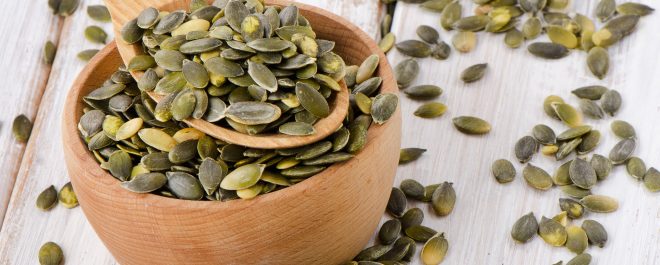
Clinic news
Happy Autumnal Equinox 2017! Say goodbye to summer as the sun passes over equator marking the first days of autumn. The days are getting shorter, the nights are drawing in, and it officially marks the end of summer in the Northern Hemisphere.
It is also a time when a lot of patients report an increase in general aches and pains, so look out below for some tips on how to sleep better - this helps you heal, and why our aches and pains might feel worse in the winter months.
Sadly there were no takers for the Spinal care challenge - you were obviously too busy doing more fun things over half term with the children - oh well look out for our next competition to win some useful prizes.
Finally we now have a fully operational system of computers up and running after a mammoth task of not only replacing the server but all the PC's and updating to Windows 10 - if only we could do that with our bodies - download the junk and replace new advanced software to help us function more efficiently - well we can't...so look after your backs and try and take on board the advice we have to offer you.

Pillows For Sound Sleeping
Today’s modern living which often entails hours of driving and hunching over work stations plays havoc with your neck. Neck pain can be felt in a large number of ways, either in your neck itself, across the shoulders, down the arms or as a headache. Neck and back problems are often worsened, if not caused, by improper sleeping habits and bad or worn out pillows. Sleep is very important to your body’s repair process, and a poor pillow often accounts for disturbed sleep. Compromise the quality of sleep, and overall health and mental fitness may suffer as well.
To support your tender and vulnerable neck you need to use a pillow that can be shaped to hold your neck in alignment and adequately support your head. This relieves muscle tension around your neck and shoulders and correctly positions your head, arms, and lower back for a relaxed sleep.
The support of a pillow should be mostly under your neck. Pillows that can be fluffed and squished to fit your unique contours, shape, and sleeping posture offer the best solution. A pillow should “fit”, just like a pair of shoes.
Natural-fill pillows such as down and feather provide the most comfort, long-term performance, and adjustability of any pillow, and they gently support your head. Unfortunately, most people hang on to a pillow long after its healthy sleeping power.
It is crucial you avoid using little or no pillow as this places your unsupported neck under strain all night long. It is equally unwise to use too many pillows or a pillow that is too firm as this can push your neck up, preventing the neck joints from moving properly, regardless of which position you sleep in.
It is also important to remember that a pillow should be placed between your neck and shoulder, but not underneath your shoulder itself. Taking this into account, a person with broader shoulders will require a larger pillow than someone with narrower shoulders, if they sleep on their side.

November Challenge
On average if you sleep for 8 hours a night then that’s a third of your life spent with your pillow – so it makes sense to make sure it’s right!
Checklist:
- Do you sleep on your front? If yes – please speak to your Chiropractor as this is an issue which may contribute to many problems.
- Do you sleep on your side? Well done, probably the best sleeping position for your spine for most people. Lying on your side your pillow(s) should give enough support so you nose is in line with your chest bone. Too many pillows and your neck will tilt up, too few and it will lean down. Get a partner to check if your
- Sleeping on your back then? Too many pillows here and your neck will get stretched towards your chin, and again too few and it might not be supported enough.
For more information speak to your Chiropractor and try out one of our neck pillows. Terms and conditions apply.

Back Pain? Don\'t Blame The Weather!
Researchers reveal that sudden, acute episodes of low back pain are not linked to weather conditions such as temperature, humidity, air pressure, wind direction and precipitation.
Findings published in Arthritis Care & Research indicate that the risk of low back pain slightly increases with higher wind speed or wind gusts, but was not clinically significant.
According to the World Health Organization (WHO) nearly everyone experiences low back pain at some point in their life, making it the most prevalent musculoskeletal condition; affecting up to 33% of the world population at any given time.
“Many patients believe that weather impacts their pain symptoms,” explains Dr. Daniel Steffens with the George Institute for Global Health at the University of Sydney, Australia. “However, there are few robust studies investigating weather and pain, specifically research that does not rely on patient recall of the weather.”
For the present case-crossover study 993 patients seen at primary care clinics in Sydney were recruited between October 2011 and November 2012. Weather data from the Australian Bureau of Meteorology were sourced for the duration of the study period. Researchers compared the weather at the time patients first noticed back pain with weather conditions one week and one month before the onset of pain.
Results showed no association between back pain and temperature, humidity, air pressure, wind direction or precipitation. However, higher wind speed and wind gusts did slightly increase the chances of lower back pain, but the amount of increase was not clinically important.

Foods can help relieve pain
The primary factors that can cause or worsen pain include poor posture, injury, too little (or too much) activity, and specific conditions such as arthritis. However, what you eat can also help to manage or relieve pain, or even prevent it injury in the first place.
Here are some of our top nutrition tips for managing pain.
- Ditch the processed foods
Processed foods generally refers to most things that come in a packet with a list of ingredients: from biscuits to ready meals to breakfast cereals. They often contain little in the way of naturally occurring vitamins and minerals. They may worsen inflammation and pain because they contain higher levels of unhealthy fats – in particular, processed omega-6 fats and ‘trans’ fats, which have pro-inflammatory properties. They often contain quickly absorbed sugars or refined carbohydrates too, which may exacerbate inflammation when consumed in excess.
In contrast, ‘real’ foods are as close as possible to how they are found in nature. They can include whole vegetables and fruit, nuts and seeds, whole grains, fish, eggs and meat (whole cuts, not ‘deli’ or processed meats). These foods naturally contain higher levels of nutrients that can help reduce inflammation and pain, such as those we’re going to look at in more detail below.
- Eat magnesium-rich foods
One of the nutrients that may help to manage pain and inflammation is magnesium. Magnesium helps our muscles to work normally, including helping them to relax, which in turn helps to avoid or relieve muscle tension that can contribute to pain. This mineral is also important for the nerves.
Magnesium is found primarily in whole unprocessed plant foods – especially green leafy vegetables such as spinach and kale, seeds and nuts, and whole grains including rye and buckwheat.

- Include oily fish
Oily fish such as mackerel, salmon, sardines, herring and anchovies are high in omega-3 fats. These fats have anti-inflammatory properties and therefore may help to manage pain. The specific omega-3s in fish (EPA and DHA) can be more beneficial than the types of omega-3 found in seeds such as flax seeds.
Aim to eat a serving of oily fish around three times a week. These can include tinned sardines and salmon as long as they do not contain added vegetable oils (olive oil is fine). Note that ‘omega-3 fish fingers’ are not a good source of omega-3 fats – stick to the real thing!
- Get plenty of vitamin C
You may know vitamin C for its role in the immune system. But in fact the primary role of vitamin C is in making collagen – a protein that forms the basic structure of most of the body’s tissues, including the bones, joints and muscles. If your body can’t make collagen properly, these tissues will lose strength and function, contributing to not only day-to-day pain but also potentially painful conditions such as arthritis and osteoporosis.
Eating a variety of vegetables and fruit is the best way to get enough vitamin C. Although ‘five-a-day’ is the well-known recommendation, we should be aiming for at least seven portions a day, primarily of vegetables, in order to get good amounts of vitamin C and antioxidants. Some of the best sources of vitamin C include peppers, kale, broccoli, kiwi fruits, Brussels sprouts, watercress and red cabbage. If you can, get your veg and fruit from a local producer (e.g. a farmer’s market) as it can lose its vitamin C when it’s stored or transported for long periods of time.

- Include anti-inflammatory spices
The spices ginger and turmeric in particular can have anti-inflammatory and pain-relieving properties. Use fresh ginger and powdered turmeric in your cooking whenever you can, make fresh ginger tea with a grated thumb-sized piece of ginger. If you have a good vegetable juicer you can even make fresh ginger juice to sip on – but watch out, it’s strong!
- Try avoiding nightshades
The ‘nightshade’ or solanaceae vegetables may worsen inflammation and pain for some people. These are aubergines, tomatoes, potatoes (not sweet potatoes), and peppers – including chillis and all types of chilli powder (cayenne, paprika etc.). If you’ve implemented the other changes for at least three months and not noticed a significant improvement in your pain, then try eliminating the nightshade vegetables.
- Consider eliminating gluten
Gluten is a protein that’s found primarily in wheat, barley and rye. The most severe reaction to gluten is coeliac disease, where the sufferer has to avoid gluten for the rest of their life. But some people who do not have coeliac disease may also react to gluten in a less severe way, which can contribute to inflammation in the body. If you’re cutting out gluten it can be best to work with a nutrition practitioner (e.g. a nutritional therapist) for support to make sure you’re not missing out on any nutrients.
For further information or comments, please contact at on or email at
We treat all conditions that affect any muscle or joint in your body, from your head to your little toe! One of the most common complaints that we treat is back pain and Chiropractic is recommended by the government authority, the National Institute for Clinical Excellence (NICE) for acute and chronic back pain. Some of the other conditions that we treat are neck and headache, shoulder pain, leg and hip pain, knee and foot pain, sciatica and arthritis. Our registered Chiropractors all have at least five years of training. Treatment costs can be covered through most health insurers. If you are in any doubt, we are always very happy to talk with you on the phone to see if your condition will respond well to Chiropractic treatment. Call the clinic now to arrange an appointment time that works for you. 0115 9225085 If you would like to opt-out of receiving these newsletters please follow the unsubscribe link below, email alex@beestonchiropractic.co.uk or let us know at your next appointment.







